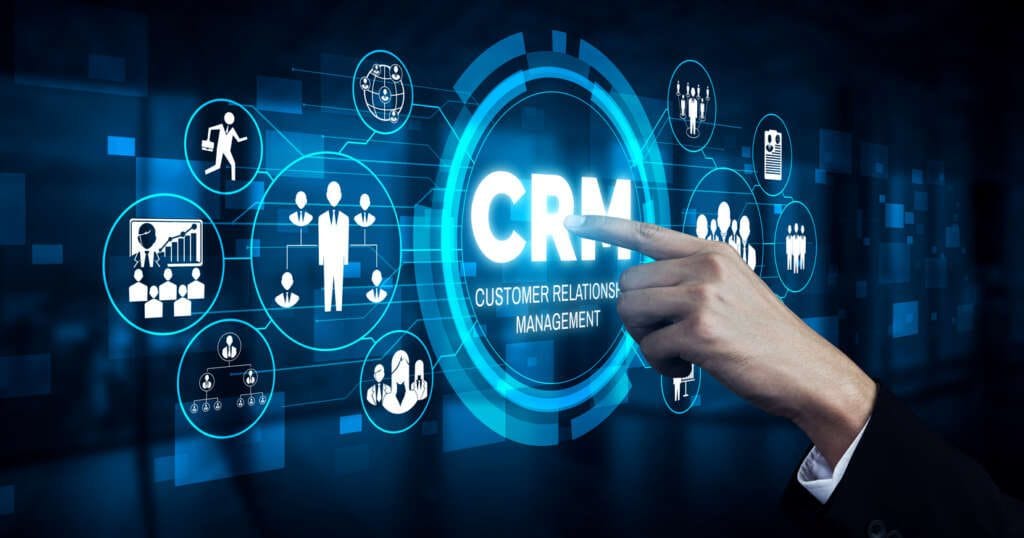
Maximise your CRM to get more leads
Adam Herbert is the co-founder and CEO of Go Live Data, the company that helps corporations and SMEs thrive through their marketing campaigns. Here, Adam discusses how to maximise your CRM to generate more leads as an essential tool for business growth.
Let’s imagine your CRM is clean and up to date and compliant, which in our experience this is rarely true for many businesses. This article will discuss ways of generating new business opportunities by using your CRM and retaining your customers.
If you’re likely to have lots of data in your CRM, it’ll be based around existing customers, lapsed customers and prospects, so what can you do to maximise new business as well as retention for your business? The obvious thing here is to communicate to them, but the more complex question is what form of communication and what median is best for each client.
But let’s be real for a second, because as a business you have lots of options when it comes to communicating to your CRM data:
- Direct Mail – You could send a letter of postcard to all your data – once you have checked against the mailing preference service.
- Telemarketing – You could phone all your data if the phone number is callable on TPS/CTPS.
- Email Marketing – Again, you can email your contacts on your database if you have their email addresses, and, if they are a corporate subscriber and not an individual subscriber.
- LinkedIn – You could set-up a campaign if you know the right person to engage with and they are part of your network, or if you use LinkedIn paid services.
I will focus on these forms of communication, but rest assured, there are many more options such as door knocking, other social media, you tube, PPC, SEO and many more.
Based on these four communication strategies, it’s possible to see immediately, the challenges in making a single approach due to compliance. Some of the data may not be mailable or callable and some I might not the details, to email market or message on LinkedIn so if that’s the case, how do I generate leads and how do I prioritise the way I reach out to prospects?
The CRM strategy is only as good as the data stored and if the data isn’t fresh, updated or compliant, it can lead to a ton of lost time and effort. So, for starters, you need to understand the data you hold in your CRM and at an individual record level, to know what you can and can’t do with it. You then need to understand the perceived value of each customer/prospect to understand the median of communication to contact them with and to assess the likely amount of work needed to generate an opportunity.
An example here is a phone call, which is more expensive than a piece of direct mail and a piece of direct mail is more expensive than an email or social media message. Not to mention the multiple approaches it could take, through each medium, to generate a response and not forgetting that every touch point is an additional cost.
It is also worth considering lead generation to your CRM data; however, we would recommend doing a few things with your data before you start with engagement. By this we mean, splitting your data into pots:
- Customers – who you will have their transactional history and frequency of purchase details
- Lapsed Customers – you will have the same details as if they were a customer as well as their termination date and hopefully the reason why
- Prospects – this will have been collected from multiple areas or be bought in data, following a certain criterion
Once you have split your data into pots, I would then recommend doing a further breakdown in each area to ascertain the contact process. To help our customers to understand the process we provide client onboarding sessions that we break things down into the following groups:
- Customers – what do you want to cross-sell or upsell – being customers, a more personalised approach via a phone call could be the best approach, backed up with email and direct mail where applicable – the reasoning being that you already have a relationship in place so a catch-up call usually warrants the best return.
- Lapsed Customers – like the above, but the call should be prioritised based upon their termination date, and by if they used another provider and understanding the contract term, i.e. did they go to a competitor and sign a new two-year contract? Depending on when the contract renewal is, will determine what approach to make such as soft touch points via email marketing.
- Prospects – If you are using a propensity model you can ascertain the high value, medium value and low value opportunities. For the high value contact consider telemarketing but for the medium and low value contacts, we advise email marketing. You will also need to work out how many emails you will need to send to generate a lead. You can also start to see how many prospects engage with your brand, to build a custom audience of engaged prospects who you can communicate to, forming the basis of any direct mail, telemarketing or social campaigns.
The good news is that most CRMs offer the functionality needed to run these segmentation exercises. However, be careful of running cold email acquisition programmes using your CRM, as this can often break the terms and conditions of usage.
I have talked a lot about using your CRM data to generate leads but it’s worth noting that a world class CRM strategy can only help with client retention i.e., soft touch points, catch up calls etc can be mapped out and standardised across the business.


